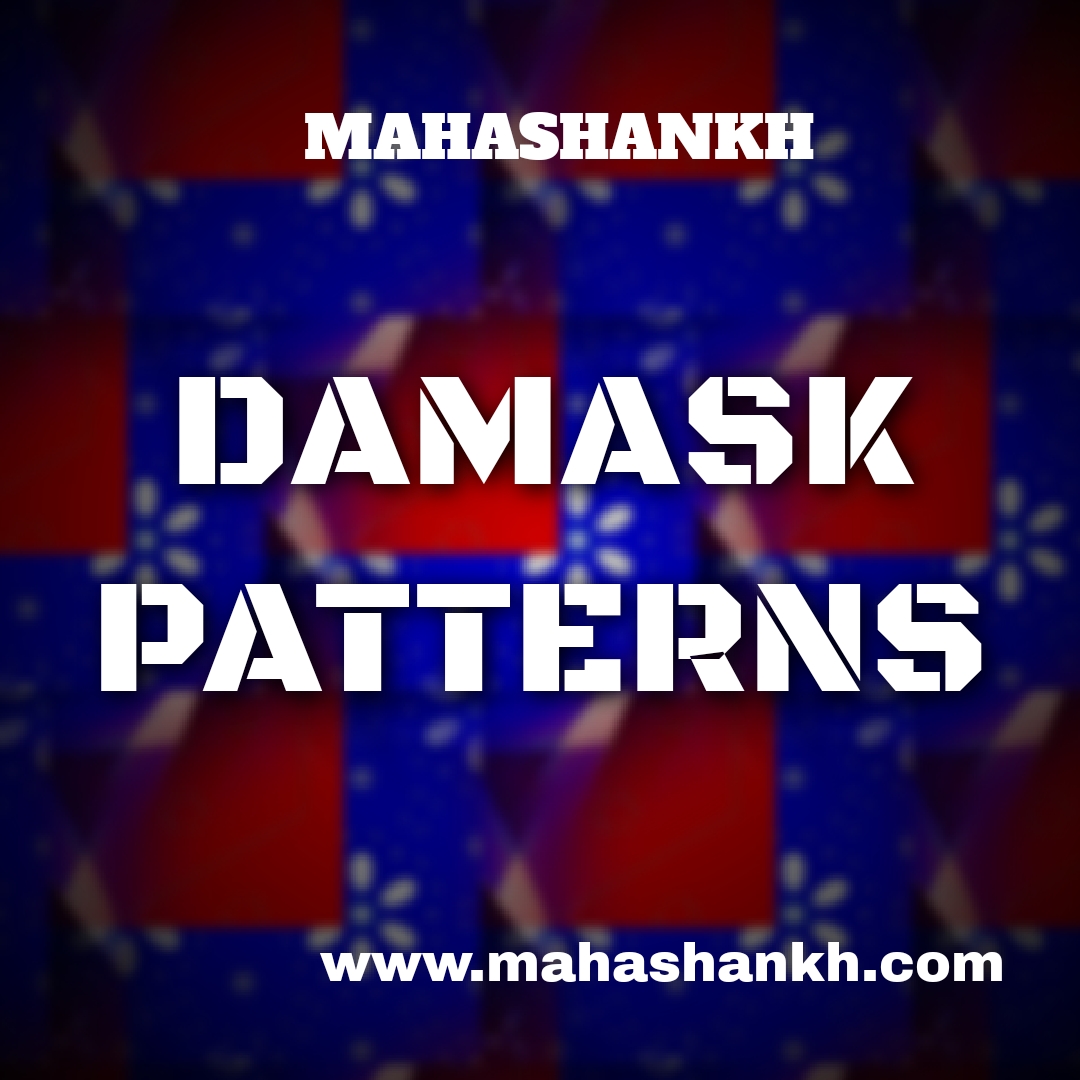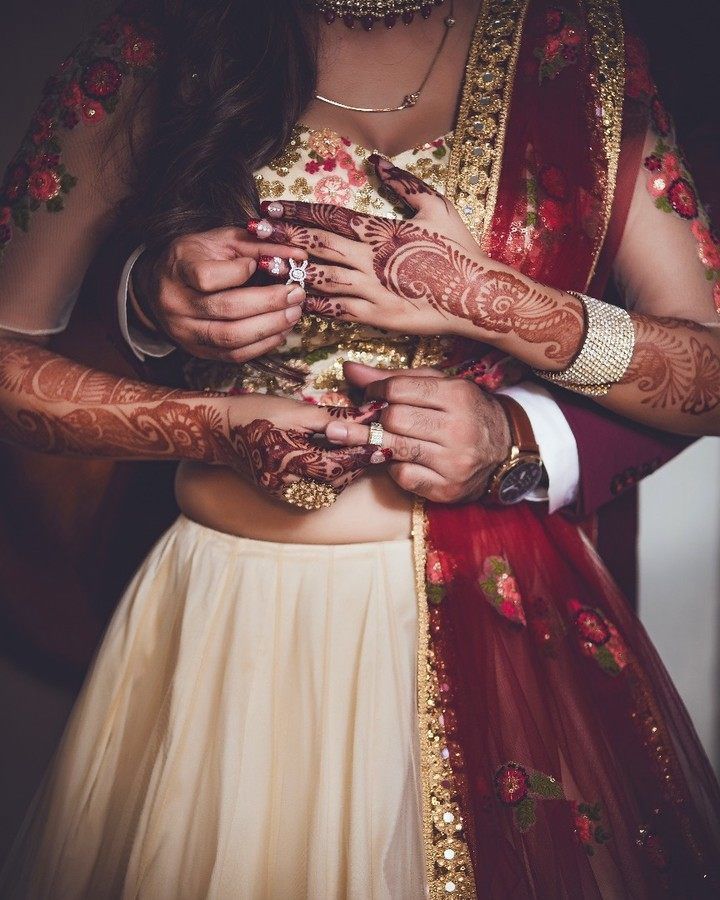Damask Patterns: A Timeless Elegance in Textile Design
Damask patterns have long been synonymous with elegance, luxury, and sophistication in the realm of textile design. With their intricate designs, rich textures, and historical significance, damask patterns have captured the imagination of artists, designers, and discerning individuals throughout the centuries. From their origins in ancient Byzantium to their prominent place in contemporary interiors, damask patterns continue to exude a timeless allure.
Table of Contents
Mahashankh Damask Patterns
Originating in the early Middle Ages, damask patterns derive their name from the city of Damascus, which was renowned for its textile production and intricate weaving techniques. These patterns are characterized by a reversible design that is achieved through the use of contrasting matte and lustrous threads. This interplay of light and shadow adds depth and complexity to the pattern, creating a visual feast for the eyes.
The creation of damask patterns involves a meticulous weaving process that requires exceptional skill and craftsmanship. Traditionally, damask fabrics were woven on jacquard looms, which enabled the weaver to control individual warp threads, allowing for the intricate motifs and patterns to be formed. This level of precision and attention to detail is a hallmark of damask patterns, reflecting the dedication and artistry of the artisans involved.
One of the distinguishing features of damask patterns is their ornate and elaborate designs. These patterns often feature botanical motifs, intricate geometric shapes, and ornamental elements inspired by nature, architecture, and historical symbolism. The interplay of these motifs creates a sense of opulence and grandeur, making damask patterns a favored choice for luxurious settings and formal occasions.
The color palette of damask patterns is typically rich and sophisticated, consisting of deep jewel tones, metallic hues, and subtle neutrals. These colors further enhance the sense of luxury and elegance associated with damask designs. Gold and silver threads are frequently used to accentuate the intricate details and add a touch of glamour to the fabric.
Throughout history, damask patterns have been closely associated with royalty, nobility, and high society. They were prized for their luxurious appearance and were often used to adorn the clothing, furnishings, and interiors of the affluent. Even today, damask patterns continue to evoke a sense of grandeur and refinement, making them a popular choice for high-end upholstery, drapery, and decorative elements in luxury homes, hotels, and prestigious venues.
The versatility of damask patterns allows them to seamlessly blend with various design styles, from classic and traditional to contemporary and transitional. Whether used as an accent or the focal point, damask fabrics and wallpapers add a touch of timeless elegance to any space. They can create a sense of drama and sophistication in formal dining rooms, luxurious bedrooms, or stately living areas.
In recent years, there has been a resurgence of interest in damask patterns, as designers and homeowners seek to infuse their spaces with a sense of history and refined aesthetics. This revival has led to a reinterpretation of damask, with contemporary designers incorporating modern elements and techniques to create fresh and innovative iterations of this timeless motif. The adaptability of damask patterns ensures their relevance in today’s design landscape, allowing for creative exploration and experimentation.
In conclusion, damask patterns stand as a testament to the enduring appeal of sophisticated textile design. With their intricate motifs, reversible nature, and rich textures, damask patterns continue to captivate and inspire. From their historical origins to their modern interpretations, damask patterns represent the timeless elegance and artistry of the textile world. Whether adorning upholstery, draperies, or wallpapers, damask patterns add a touch of regal splendor and elevate any interior to the realm of refined luxury.
The popularity of damask patterns extends beyond home interiors and fashion. They have also found their way into other design disciplines such as graphic design, product design, and even architecture. The intricate and repetitive nature of damask motifs lends itself well to these fields, allowing for the creation of visually captivating and cohesive designs across different mediums.
Damask patterns have become a source of inspiration for artists and designers seeking to evoke a sense of heritage and craftsmanship in their work. The symmetrical and balanced nature of damask designs provides a strong foundation for creating cohesive and visually pleasing compositions. This has led to the incorporation of damask-inspired elements in contemporary artworks, logo designs, and even digital media.
The revival of damask patterns has also been influenced by a growing appreciation for sustainable and artisanal practices. As consumers become more conscious of the environmental impact of fast fashion and mass-produced goods, there is a renewed interest in traditional craft techniques, including the weaving and production of damask fabrics. By embracing damask patterns, individuals can support local artisans and promote sustainable and ethical design practices.
In addition to their aesthetic appeal, damask patterns possess a historical significance that adds depth and character to their allure. Many damask designs draw inspiration from historical periods, such as the Renaissance or Baroque era, reflecting the cultural and artistic movements of the time. By incorporating damask patterns into contemporary design, we pay homage to the artistic traditions and craftsmanship of the past.
The enduring nature of damask patterns can be attributed to their ability to transcend trends and remain relevant across generations. While they have been associated with traditional and formal aesthetics, damask patterns can also be adapted to suit modern and eclectic styles. Designers often play with scale, color, and texture to create contemporary variations of damask that cater to diverse design preferences and lifestyles.
Damask patterns are not limited to fabric and wallpaper. They have been applied to a wide range of products, including ceramics, tableware, and even jewelry. These applications showcase the versatility of damask motifs and their ability to enhance various surfaces and objects with their intricate and captivating designs.
In conclusion, damask patterns stand as an epitome of timeless elegance and refined craftsmanship. From their historical origins to their contemporary interpretations, these intricate motifs continue to captivate and inspire. With their reversible designs, rich textures, and ornate motifs, damask patterns add a touch of sophistication and grandeur to any design. Whether used in traditional or modern contexts, damask patterns represent a fusion of history, artistry, and enduring style.
TYPES OF DAMASK PATTERNS
Damask patterns encompass a wide range of designs and motifs, each with its own distinct characteristics. Here are some of the notable types of damask patterns:
- Floral Damask: This type of damask pattern features intricate floral motifs, including roses, tulips, vines, and other botanical elements. The floral designs can be realistic or stylized, and they often evoke a sense of elegance and natural beauty.
- Geometric Damask: Geometric damask patterns are characterized by repetitive geometric shapes and symmetrical arrangements. These patterns often include interlocking squares, diamonds, circles, or intricate geometric tessellations, creating a visually captivating and balanced design.
- Medallion Damask: Medallion damask patterns are centered around a prominent focal point or medallion motif. These motifs can be circular, oval, or rectangular in shape and are often surrounded by ornate borders or intricate details.
- Paisley Damask: Paisley damask patterns draw inspiration from the traditional teardrop-shaped paisley motif. The paisley elements are arranged in a repeating pattern, creating a sense of movement and rhythm within the design. Paisley damask patterns often feature intricate details and are known for their rich and vibrant color palettes.
- Scroll Damask: Scroll damask patterns incorporate elegant and flowing scrollwork motifs. These designs often resemble curving leaves, tendrils, or abstract shapes that intertwine and create a sense of movement and grace.
- Damask Stripes: Damask stripes feature a combination of damask motifs and stripes, where the damask pattern is incorporated within the stripes. This variation adds a dynamic element to the design, blending the elegance of damask with the structured simplicity of stripes.
- Damask Brocade: Damask brocade patterns combine damask motifs with raised or textured elements, creating a three-dimensional effect. This technique adds depth and richness to the design, making it visually captivating and luxurious.
- Oriental Damask: Oriental damask patterns draw inspiration from Asian art and culture. These patterns often feature motifs such as dragons, peonies, cherry blossoms, or other traditional Asian symbols. Oriental damask patterns are known for their intricate details and vibrant colors.
- Baroque Damask: Baroque damask patterns evoke the opulence and grandeur of the Baroque period. These designs often feature elaborate motifs, such as scrolls, shells, acanthus leaves, and other intricate details. Baroque damask patterns are characterized by their dramatic and ornate aesthetic.
- Contemporary Damask: Contemporary damask patterns offer a modern interpretation of the traditional damask motif. These designs often incorporate abstract or minimalist elements, playing with scale, color, and texture to create a more contemporary and eclectic look.
These are just a few examples of the many types of damask patterns that exist. Each type carries its own unique style, allowing individuals to choose a damask pattern that aligns with their personal preferences and complements their desired aesthetic.
HISTORY OF DAMASK PATTERNS
The history of damask patterns can be traced back to ancient times, with their origins deeply rooted in the textile traditions of various cultures. The development and refinement of damask weaving techniques occurred over centuries, resulting in the exquisite patterns and textures we associate with damask today.
The earliest evidence of damask-like textiles can be found in ancient China, dating back to the Han Dynasty (206 BCE – 220 CE). These early examples showcased intricate woven designs using silk threads, often featuring floral motifs and geometric patterns. Chinese damasks were highly prized and known for their exceptional quality.
Damask weaving techniques spread to other parts of the world, including the Byzantine Empire (330-1453 CE). Byzantium became a major center for textile production, with its capital city, Constantinople (now Istanbul), renowned for its luxurious fabrics. Byzantine damasks were characterized by intricate patterns, often incorporating religious and mythological motifs.
During the Middle Ages, damask weaving flourished in the Islamic world, particularly in cities such as Damascus (hence the name “damask”) and Al-Andalus (Islamic Spain). Islamic damasks featured elaborate geometric designs, calligraphy, and stylized floral motifs. The weaving techniques employed by Islamic artisans greatly influenced the development of damask patterns in Europe.
In Europe, damask weaving gained prominence during the Renaissance (14th-17th centuries). Italian cities, such as Florence and Venice, became renowned centers for the production of luxury textiles, including damask fabrics. The Italian Renaissance damasks often featured elaborate designs influenced by nature, classical mythology, and architectural elements.
By the 17th and 18th centuries, damask weaving had spread throughout Europe, with countries such as France, England, and the Netherlands becoming significant producers of damask fabrics. The designs became more elaborate and ornate, reflecting the prevailing Baroque and Rococo styles of the time. Damask patterns adorned the garments, furnishings, and interiors of the wealthy and aristocratic classes.
With the Industrial Revolution in the 19th century, damask weaving underwent significant changes. Mechanical looms were introduced, enabling faster and more efficient production. While this increased accessibility to damask fabrics, it also led to a decline in the traditional craftsmanship associated with handwoven damasks.
In the 20th century, damask patterns continued to be appreciated for their elegance and luxury. Designers and manufacturers embraced damask fabrics for high-end upholstery, drapery, and formal clothing. The Art Nouveau and Art Deco movements brought new influences and interpretations to damask designs, incorporating stylized motifs and streamlined aesthetics.
Today, damask patterns remain highly regarded for their timeless beauty and sophistication. They continue to be incorporated into a wide range of design applications, including fashion, interior design, and product design. Contemporary designers often experiment with damask motifs, adapting them to suit modern sensibilities and introducing new variations of the classic patterns.
The history of damask patterns reflects the ingenuity and artistic skills of cultures across time. From ancient China to Byzantium, the Islamic world to Renaissance Europe, and beyond, damask patterns have endured and evolved, retaining their allure and cultural significance. As we continue to appreciate and embrace damask patterns, we celebrate the legacy of craftsmanship and creativity that has shaped their remarkable history.
FUTURE OF DAMASK PATTERNS
The future of damask patterns is an exciting prospect as they continue to evolve and adapt to changing design trends and technological advancements. Here are some potential directions for the future of damask patterns:
- Digital Innovations: With the advancement of digital technologies, designers have the opportunity to explore new possibilities for creating and manipulating damask patterns. Computer-aided design (CAD) software allows for intricate and precise pattern creation, enabling designers to experiment with complex designs and variations more efficiently. Digital printing techniques offer the potential for producing customized damask patterns on-demand, opening up opportunities for personalized and unique designs.
- Sustainable Practices: As sustainability becomes increasingly important in the design industry, the future of damask patterns may involve a greater emphasis on eco-friendly materials and production processes. There is growing interest in utilizing organic, natural fibers for damask fabrics, as well as exploring innovative techniques for reducing waste and minimizing environmental impact. Eco-conscious consumers are seeking products that combine the elegance of damask patterns with sustainable and ethical practices.
- Fusion of Traditional and Contemporary: The future of damask patterns may involve a fusion of traditional aesthetics with modern design sensibilities. Designers are likely to experiment with combining damask motifs with unexpected elements, such as abstract forms, unconventional color palettes, or incorporating them into minimalist and contemporary spaces. This blending of traditional and contemporary styles can create fresh and captivating interpretations of damask patterns that resonate with a broader audience.
- Technological Integration: With the rise of smart homes and interactive design, the future of damask patterns may involve integrating technology into their designs. Imagine damask patterns that incorporate LED lights or interactive elements, responding to touch or movement. These technological advancements can add a new layer of functionality and dynamism to damask patterns, transforming them into immersive and interactive experiences within interior spaces.
- Cultural Exchange and Global Influences: Damask patterns have historically been influenced by different cultures and artistic traditions. In the future, the exploration and fusion of diverse cultural influences may become even more pronounced. Designers may draw inspiration from a wider range of cultural motifs, patterns, and techniques, incorporating them into damask designs to create a cross-cultural dialogue and celebrate the global diversity of design.
- Experimentation with Scale and Texture: The future of damask patterns may see designers pushing the boundaries of scale and texture. Playing with larger or smaller-scale damask motifs can create unique visual effects and make a bold design statement. Additionally, the incorporation of different textures, such as embossing, laser-cutting, or three-dimensional weaving techniques, can add depth and tactile interest to damask patterns, enhancing their overall impact.
The future of damask patterns holds tremendous potential for innovation and creativity. As designers continue to push boundaries, embrace sustainability, and integrate technology, we can expect to see a continued evolution of damask patterns that captivate and inspire. While honoring the rich heritage of this timeless design tradition, the future of damask patterns promises to bring forth exciting and unexpected possibilities that will leave a lasting impression in the world of design.






